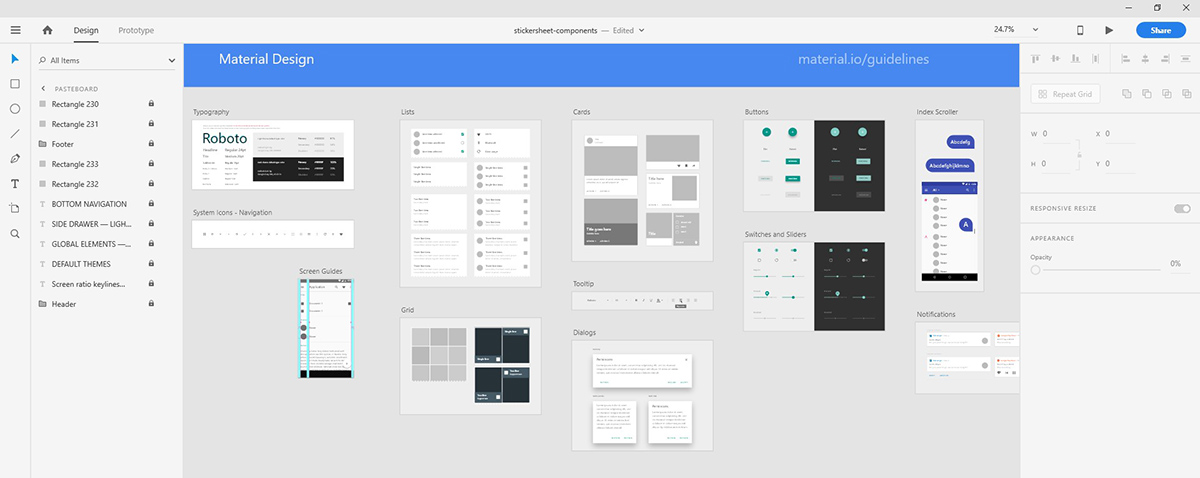
- #Adobe xd prototype update
- #Adobe xd prototype full
- #Adobe xd prototype windows 10
Symbols can be vector graphics, raster images, or text objects, and they can also be used as objects within Repeat Grids.
#Adobe xd prototype update
Update one and they’ll update everywhere, or choose to override specific instances.
Reimagined symbols – Save time with symbols, reusable design elements that eliminate the need to find and edit each instance of an asset across a document. Edit any color or character style in the panel and the changes will be reflected throughout your document. Assets panel – Make colors and character styles easily available for reuse by adding them to the Assets panel (formerly the Symbols panel), which automatically includes symbols. #Adobe xd prototype windows 10
Cross-platform support – Adobe XD natively supports Windows 10 (Universal Windows Platform) and Mac, with companion mobile apps for Android and iOS. Update an element once and your changes will update everywhere. Repeat Grid – Select items in your design, such as a contact list or photo gallery, and replicate them horizontally or vertically as many times as you want - all your styles and spacing stay intact. Choose from preset sizes or define your own, and copy between artboards without losing placement of your design elements. Design for different screens and devices. Fast, versatile artboards – Whether you’re working with one artboard or a hundred, XD gives you the same fast performance. You’ll get notified when they make comments, and they can simply refresh their browsers to see your changes. Reviewers can comment directly on your prototypes and specific parts of your design. Publish prototypes for feedback – Generate shareable web links to get feedback on your designs, or embed them on Behance or a web page. Add interactions with intuitive visual controls to test and validate the experience. Connect design elements from one artboard to another, including Repeat Grid cells. Interactive prototypes – Switch from design to prototype mode with a single click, and connect artboards to communicate the flow and paths of multiscreen apps. Following the steps I’ve detailed here will help ensure you’re set up for success - and a fast development stage - in Webflow. The final stage of this process is, of course, bringing all my XD work over to Webflow. This last step is optional, but helps maintain that one-to-one relationship between mockups and site that I mentioned before, and it’s great for illustrating things for clients, if needed. 
In this final stage, I start applying XD’s prototyping toolset to link pages, add transitions and states, and polish the design preview before I bring it to life in Webflow. The best part? This helps you model the sorts of designs you’ll create in Webflow using Collection Lists. This workflow has saved my marriage - true story - because now that I don’t have to repeat elements over and over again, I have time to go on dates. Which is why it’s so great to take something like a grid of repeating layers of images and just duplicate it - over and over and over. It will save you that much time.ĭesign is all about repetition.

This will add all your colors and/or text styles to the asset panel, making it much simpler to apply them across your design.ĥ25,600 minutes in a year.
#Adobe xd prototype full
Next, select a color or character style (or, an artboard full of either), open the assets panel, and click the plus sign beside the corresponding asset type. I add my logo, colors, icons, and headings, levels one through six. When I start any project, I build a moodboard as a basis for my design system. Once I’ve designed all these, I save them to XD’s Assets UI.

This allows me to think about the foundation I want to build my site on.
Symbols (recurring elements like the main nav and footer). Components (cards, hero sections, forms, etc.). 
I also include more web-centric elements: This is where I create my design system, all in one artboard, including branding elements like: I break my website design process into five sections: 1. Each step transitions easily from XD to Webflow. Before I start designing the next unicorn tech company’s website, I want to think through the components, pages, and flows I’ll need to design.








 0 kommentar(er)
0 kommentar(er)
